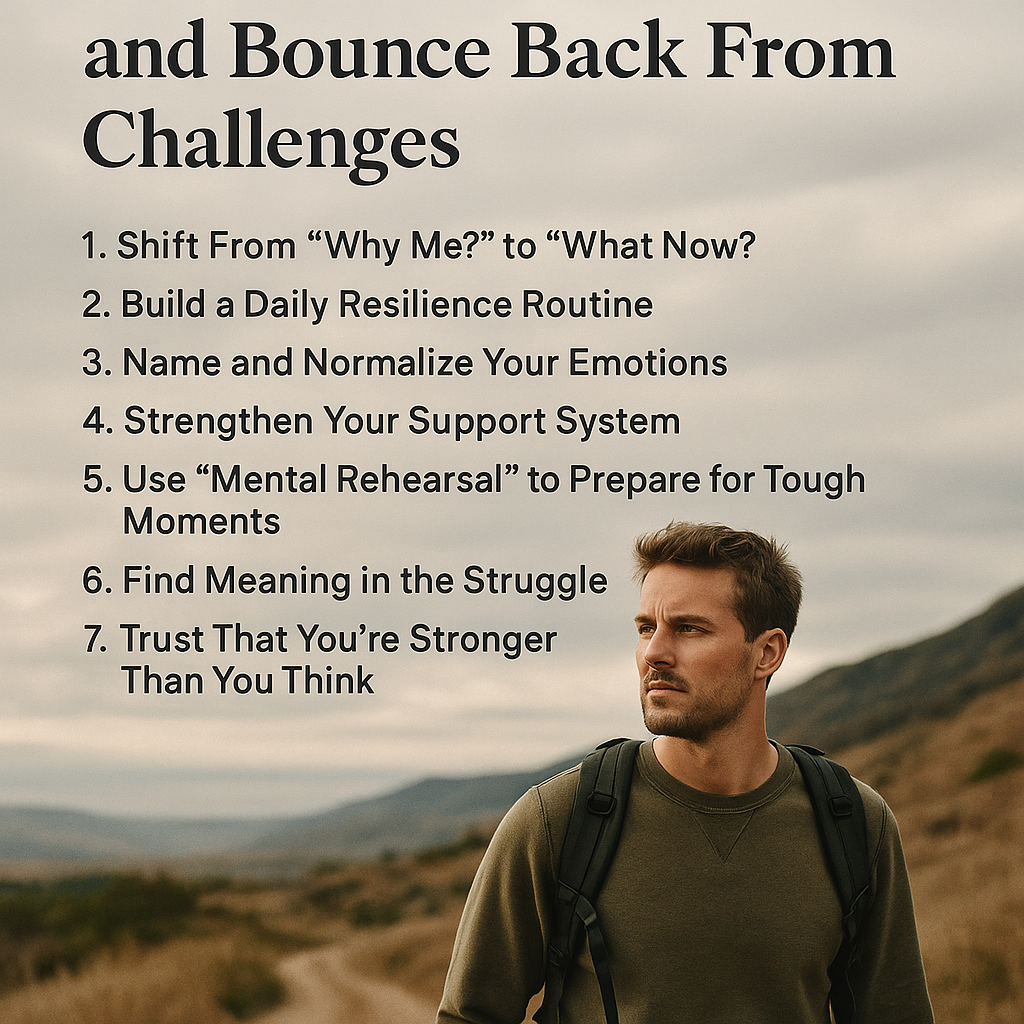Life is unpredictable. Setbacks happen. Plans fall apart. Emotions run high. But what separates those who crumble from those who rise is mental resilience—the ability to adapt, recover, and grow stronger in the face of adversity.
Resilience doesn’t mean avoiding pain. It means moving through difficulty with strength, clarity, and self-trust.
In this article, you’ll learn how to develop unshakable mental resilience so you can navigate life’s storms with confidence.
What Is Mental Resilience?
Mental resilience is your inner ability to:
- Stay calm under pressure
- Cope with stress or loss
- Adapt to unexpected change
- Recover from failure or rejection
- Keep going when things get tough
It’s like an emotional immune system—and you can strengthen it.
1. Shift From “Why Me?” to “What Now?”
When life gets hard, it’s natural to feel overwhelmed. But resilient people ask empowering questions:
- “What can I learn from this?”
- “What’s still in my control?”
- “What’s the next right step?”
These shift your focus from victimhood to action.
2. Build a Daily Resilience Routine
Resilience is built in the small, daily moments, not just during crisis.
Try:
- Morning journaling or meditation
- Daily gratitude practice
- Movement (walks, stretching, workouts)
- Ending the day with “What did I handle well today?”
These habits create emotional strength over time.
3. Name and Normalize Your Emotions
Resilient people don’t suppress feelings—they acknowledge them.
Say:
- “I feel anxious right now—and that’s okay.”
- “I’m grieving something I didn’t expect to lose.”
- “This is hard—but I’ve done hard things before.”
Naming your emotions reduces their power.
4. Strengthen Your Support System
You don’t have to be strong alone.
Build connections with people who:
- Listen without judgment
- Remind you of your strength
- Offer perspective (not just solutions)
- Let you be real, raw, and human
Asking for help is resilience—not weakness.
5. Use “Mental Rehearsal” to Prepare for Tough Moments
Visualize future challenges—then imagine handling them well.
Ask:
- “What would a resilient version of me do here?”
- “How do I want to feel during this?”
- “What strengths do I bring into this moment?”
This builds confidence before the pressure hits.
6. Find Meaning in the Struggle
Often, resilience grows when we reframe pain into purpose.
Examples:
- Turning a loss into a life lesson
- Using a setback to change direction
- Becoming more empathetic or aware
- Using your experience to help others
You don’t have to love the pain—but you can grow from it.
7. Trust That You’re Stronger Than You Think
Resilience isn’t about being fearless. It’s about moving forward despite fear.
Every time you:
- Get back up after failure
- Speak up when it’s hard
- Take care of yourself in dark moments
- Choose growth over comfort…
…you prove that you’re resilient.
Final Thought: Life Will Challenge You—But You’re Built for This
You can’t control everything. But you can choose your response. You can train your mind to bend without breaking. You can become the kind of person who rises—not just survives.
Resilience isn’t a trait. It’s a practice.
And it starts today—with one breath, one choice, one moment at a time.

